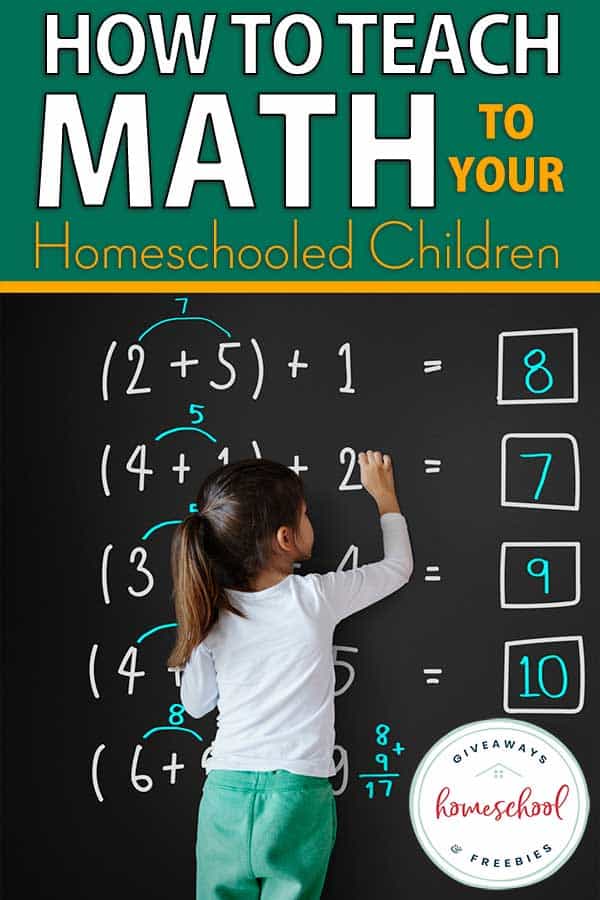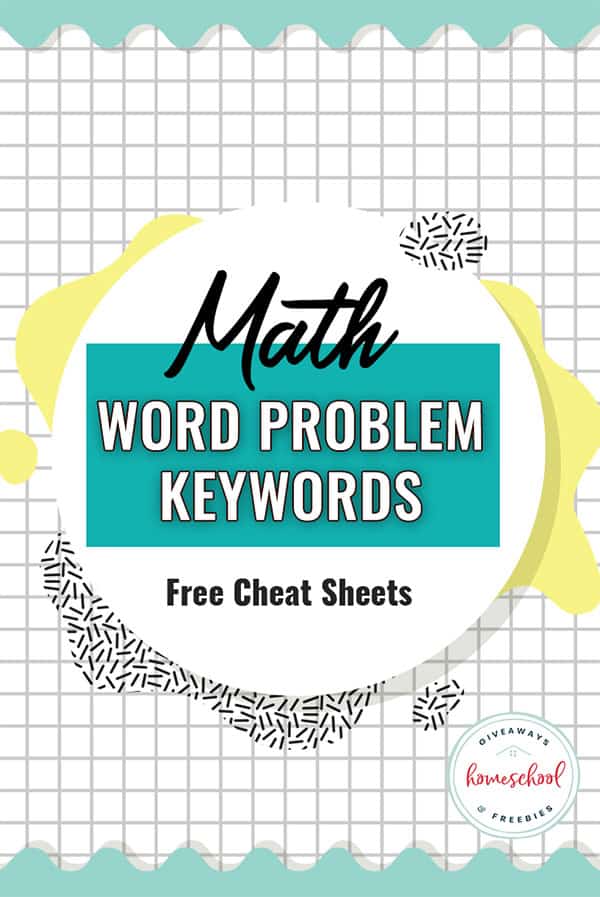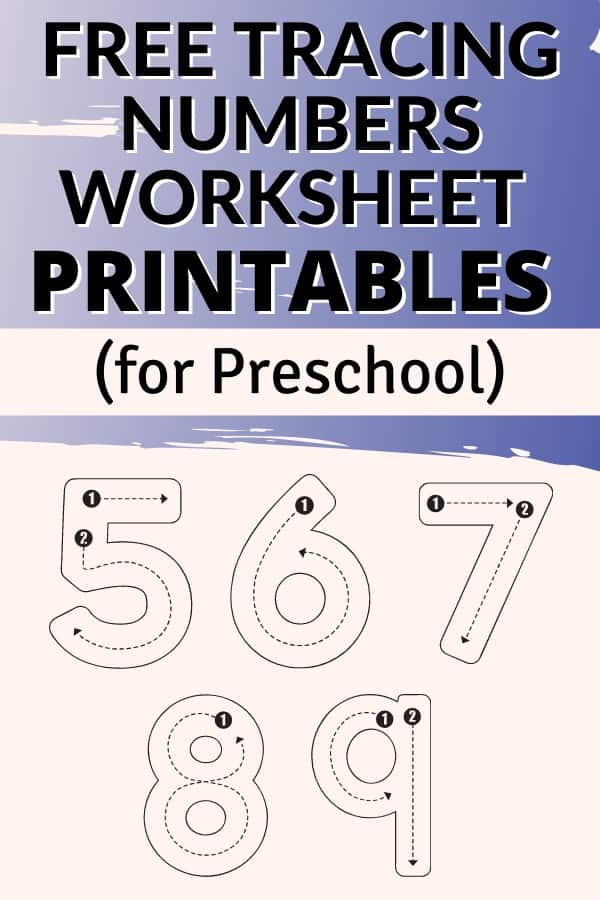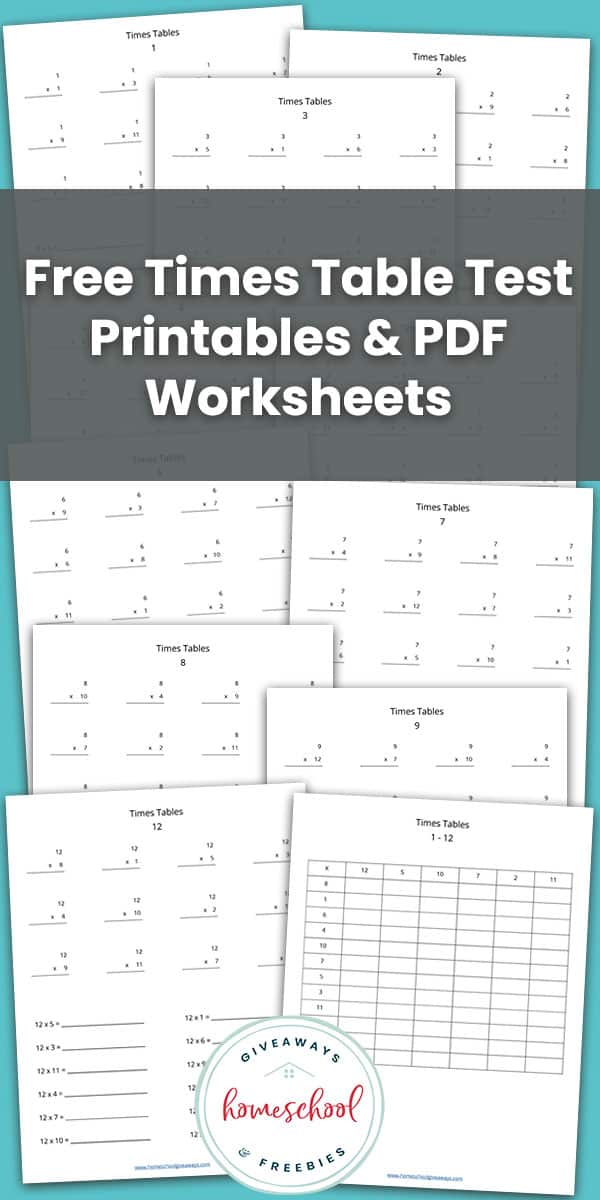How to Teach Math to Your Homeschooled Children
Published:
August 13, 2021

Contributor:
Annette Breedlove
Disclosure: This post may contain affiliate links, meaning if you decide to make a purchase via my links, I may earn a commission at no additional cost to you. See my disclosure for more info.
I am pretty sure I’ve never met anyone who is impartial on how to teach math to your homeschooled children. After homeschooling for more than a decade, I’m fairly certain homeschool moms and parents fall into one of two categories – they either love teaching math or they hate it.
There are different approaches and teaching strategies that can help your student develop a strong foundation of math skills. It’s a false belief that you have to be a math teacher or a professional mathematician to be successful at teaching math.
(Note: This is a sponsored post. All opinions are my own. Read our disclosure policy here.)
How to Teach Math to Your Homeschooled Children
Teaching math can be stressful for some homeschool parents, and children may feed off that and develop math anxiety. Some parents love math and their children don’t, while some children enjoy math and their parents don’t. Those scenarios can make for some interesting and often stressful teaching dynamics.
How do you teach math in early childhood?
Math should be taught in a fun and exciting way. Even if you dread math, you don’t want to project that onto your children.
I love teaching math through play with my little ones. We count everything while we play, from LEGO® pieces to cars they line up, to bugs we see crawling across the ground. My children always loved the counting bears. Counting becomes a game, and is a great way to demonstrate how math works in the real world. And if they mess up, I gently correct them.
Teach Basic Preschool Math Concepts
As a first look at math, you really just need to introduce your little ones to the basic preschool math concepts. I like to start with recognition of numbers and symbols before moving on to a new concept.
We naturally weave number talks into our everyday life with our toddlers. From pointing out shapes as we see them to finding numbers while we play, we try to make it as natural as possible while they’re little.
Some other math concepts you can work on with your young children include:
- problem solving
- observation
- patterns
- measurements
- and so much more
If your child can walk and think, they can learn these on the most basic of levels.
Learning to solve simple problems (not even numbered ones) will help teach them with the abstract concepts of problem solving. Encourage them to observe nature while on a hike or road signs while you’re driving. Young children are like sponges and will are able to learn a new skill easily.
Create patterns for them to duplicate or ask them to create one on their own with toys they like. Teach them simple measurement skills by using objects they have rather than a ruler or tape measure. For instance, have them measure how long a stick is by how many cars long it is. This not only makes learning fun, but relative to their age level.
Build a Strong Math Foundation with Number Sense
One important aspect of math in elementary school is learning how to build number sense. Number sense is the ability to understand key math concepts or quantities like place value and greater than, less than. Some children seem to have an innate ability to understand these math skills, while others struggle.
There are quite a few activities you can do to help a child improve their number sense skills, even some math games. But why does it matter?
Why Children Need to Grasp Number Sense
Number sense plays a key role in a student’s later ability to calculate at higher levels. By helping them develop a strong number sense during the elementary years, you will be building confidence in their calculating abilities, thereby setting them up for success in later math courses.
How do you know if your child has good number sense?
Students will likely enjoy numbers and can easily spot patterns in numbers. My oldest daughter has always had good numbers sense. She can spot patterns in numbers quickly, so addition and multiplication came easy to her. She does struggle a bit with subtraction, but once she sees the pattern, it’s locked in her brain.
A child with poor number sense will rely more on the method they understand since they can’t easily see the patterns. They may also use pencil and paper because they cannot easily work out the problem in their head.
According to Maths No Problem! “Children with poor number sense don’t enjoy maths and won’t spend time being creative with and exploring numbers. Ironically, they are doing a harder version of maths, that relies upon remembering and applying procedures, with little understanding of the underlying numerical concepts.”
I have found this to be true with my children that have poor number sense. They may want to be good at maths but the struggle is definitely real. They don’t enjoy math-type games and puzzles like Sudoku or Mastermind. And skip counting is difficult because the pattern isn’t recognized.
Encouraging and helping them develop a solid foundation with number sense can set your student on the right track as they move forward to more difficult math concepts.
Prepare Your Kids for More Difficult Math Concepts
After building a solid foundation of math basics and number sense, it’s time to start preparing for more difficult ones. There are plenty of fun ways to teach multiplication tables and division facts if you just use your imagination. By making them fun, it takes a bit of the pressure off as they begin learning these more advanced math concepts.
And while you may be thinking it’s time to throw in the towel as you begin to teach more difficult mathematical concepts, learning how to homeschool math doesn’t have to be the end of your tenure as homeschool mom. Thankfully, with a quick search on the internet, you’ll find quite a few free worksheets available to help you on your math journey.
Incorporate Living Math into Your Homeschool Day
The concept of living math must be natural and relevant to the student while you weave together other subject areas, such as science and geography. For instance, teaching your child to cook can easily incorporate math.
From measurements to ratios to cook times, they will be learning math as well as learning to provide life-long nutrition for themselves.
What is living math?
The term “living math” stems from the philosophy of Charlotte Mason, a well-known educator from the late 1800’s. Many families follow this type of teaching method in their homeschool for reading, history, and science. But how to you make math come to life?
Living Math Activities & Ideas
Most children probably think math is boring, especially if they struggle with number sense. I think a good way to help them see math in a different way is making math fun and not just a bunch of numbers on paper.
Adding in some living math activities can show them that math is relative to their own life. Take the cooking lessons for example, they will need math if a recipe needs adjusting, which if done wrong will definitely affect the outcome.
If you’re new to the Charlotte Mason method of “living” subjects, then it might be hard to come up with more than just a few living math ideas. You can use games, food, crafts, pretend play, LEGO bricks, and so much more to bring math to life for your kids. And the best part is, the student learning never stops!
How Can I Make Homeschool Math Fun?
I am not a math lover, but I’m not a hater either. It isn’t my favorite subject in the world, however, I do enjoy it – to a point. But not every child does. In fact, some downright dread the word math. Thankfully it doesn’t have to be that way. There are plenty of ways to make math more fun and enjoyable for your child (and yourself).
Use Virtual Math Manipulatives
One easy way to make math more enjoyable for your child is to use math manipulatives to make it fun. My kids have used LEGO brick blocks for years to work on math problems. Of course, I often catch them building more than working, but they seem to enjoy them and catch on to the concept when using them.
However, if you’re tight on space, don’t have the budget, or just don’t want extras lying around you might like virtual math manipulatives. Didax has some really cool browser-based manipulatives that are absolutely free to use!
Add Math Games into Your Homeschool Day
Our favorite way to make math more fun for our children is through games. We love playing all kinds of math games. Card games like Go Fish or UNO are perfect for early learners working on number recognition. As they get older and need to practice their math facts, speed drills are fun.
CTCMath has 4 levels of speed skills on their site. These are a great way to help your children work on improving their number sense and memorization in a fun way. Not to mention, they can play as much as they want!
How Math Manipulatives Can Help Kids Learn
Before we started homeschooling, I was told all about math manipulatives and that we should have a visual aid or two handy. So of course, I went on a hunt to see what we could find.
We were blessed with a teacher next door that had an over-abundance of the math link cubes (or unifix cubes) from her own classroom. Math manipulatives make math problems tangible for abstract problems.
How does using math manipulatives help students?
Those unifix cubes were one of the best things I used in our early math years, even if I did have to help them stay focused. Being able to physically see the ten blocks laid in front of them, helped them visualize the numbers. It also became really easy for them to start seeing groups of ten, fives, or twos to help them with their skip counting.
What are manipulatives used for?
Math manipulatives are a visual aid for learning number sense. Whether they are working on counting, grouping by twos – fives- or tens, or just need to visually see the numbers they are adding and subtracting together, math manipulatives are a great resource to have. They can easily be moved around to fit whatever scenario you need.
What are some examples of math manipulatives?
Even though we loved the unifix cubes, there are other options out there to use as math manipulatives. Another favorite in our house are Tangrams, which my kids could play with all day. Do you have kids that like pretend play? Try a teaching cash register with play money or measuring spoons for a play kitchen.
Learning to tell time can be fun and interactive with a foam clock with moveable hands. Create patterns with pattern blocks, or colored chips. Learn fractions with fractions strips and brick blocks. Some of these you may even have lying around your house. The point is, if you look, you can find ways to make math more fun and maybe give your child a new love for learning and a deep understanding of the importance of math.
Online Homeschool Math Curriculum
Over the last seven years, we have used an online math curriculum. But for the last five years, we have used our family’s favorite, CTCMath for all of our children starting in Kindergarten.
In our early years of homeschooling, we used a textbook math curriculum. Our oldest did fine with it, but as our next two came up they struggled with their math book. I found it more difficult to keep up with their math papers for grading. So we made the switch to an online math curriculum.
What to Look for in an Online Math Curriculum
Most parents and children fall into either the “love math” or “hate math” category, which makes choosing a math curriculum difficult. When we made the switch from textbook to online, my biggest need was convenience. I needed something that would not only track the grades, but grade the work for me too.
Some good features to evaluate when deciding which online math curriculum to use:
- Interactive lessons – are they engaging or boring?
- Lesson length – are lessons long enough to teach effectively, but not too long to cause my child to zone out?
- Review – is there adequate review weaved into the curriculum?
- Teacher – what’s the instructor’s voice like? Is he welcoming and friendly or monotone and boring?
- Grading – does the online math program handle the grading for you?
- Record keeping – are my student’s grades stored for easy access?
If you live in an area where Internet can be an issue, check to see if the curriculum is available solely online where you need a constant connection or if lessons can be watched offline.
Why An Online Math Program Might Work Best
Ultimately, we chose an online math program for the convenience. Another reason to consider an online math curriculum is for your child’s learning. Whether they are behind and struggling or they are advanced and need to be stretched, an online math curriculum can help. It also takes the pressure off of you, the parent, especially if math just isn’t your thing.
Keeping Kids Motivated for Online Learning
I have often heard people tell me their kids wouldn’t keep up with online courses. And while I understand their concern, I also think it has a lot to do with discipline – for the parent and child. When left to their own devices, my children have tried to skip out of lessons.
But with CTCMath, I can easily hop online and check their accounts. I can quickly see the last time they logged in, their grades on every lesson, and even how long it took them to complete the lesson. I also really appreciate the fact I get a weekly email with an overview of my student’s math progress for the week.
With these tools, I can easily keep my kids motivated. In fact, it is probably one of my favorite features as a parent!
Keeping my kids motivated in their online learning isn’t always easy and can be a constant battle with some. However, we do have rules in our house about not being able to go outside with friends until all their work and chores are done, so that helps.
Check out this comparison post of two of the most popular online math curricula for homeschoolers:
Comparing CTCMath & Teaching Textbooks
As I mentioned, we have used two different online math curricula; Teaching Textbooks and CTCMath over the years. And while both have positives and negatives, several months ago I took a look at both of them and compared CTCMath and Teaching Textbooks side-by-side.
Our favorite, of course, is CTCMath because it fits our family so well. I recommend it to all our fulltime traveling friends because it is so easy to use. And they literally do the teaching for you!
In the end, it is about teaching math to your children in the best way possible for them to learn. I believe CTCMath does that very well with their style of teaching and the math manipulatives they include in their program. CTCMath’s features are the perfect fit for our family.
Trying Out CTCMath
CTCMath is a Cathy Duffy Top 101 Pick and is a popular homeschool math curriculum amongst homeschoolers for a good reason. You can try CTCMath for free and see if it’s a good fit for your family. I love that I have to only buy one subscription and I can use it with my entire family. that saves us a ton of money since we have a large homeschool family.
Homeschoolers get a 50% discount PLUS access for a full year, not just a typical 9-month school year.









